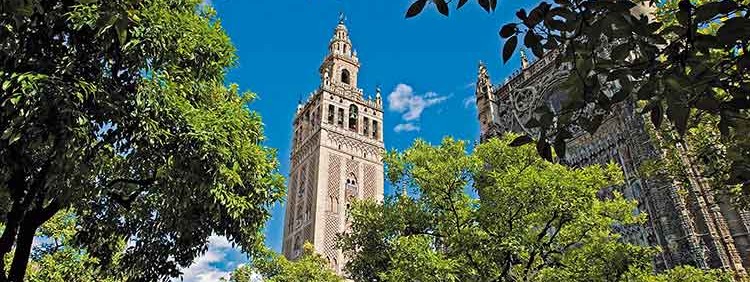The quintessential Spain
Seville is unique. Its character, history, bravura – all mark it out as exceptional. Although at times it gives the impression of already knowing this, most visitors are won over by its radiant self-confidence and undeniable glamour. To start with, it has an historical pedigree that few cities in Europe can match. Iberians, Phoenicians, Carthaginians and Visigoths had all left their mark before the Moors sited here their first capital of al-Andalus, prior to turning their sights on Córdoba. After its conquest by the Castilians in 1248 under the “holy” King Ferdinand III it became a favoured residence of Spanish kings, notably Pedro “the Cruel” who had Muslim craftsmen build him a palace in the Alcázar, in a fusion of Christian and Muslim styles known as “Mudéjar” that perhaps best serves as emblem of the city’s brassy originality.
But it was in 1492, with the discovery of the “New World”, that Seville saw its status leap from merely important to essential and all-pervasive. As the exclusive port for trade with the Indies (1503−1718) the city became a hubbub of activity and intrigue, Spaniards and foreigners alike attracted by its beguiling promises of new riches, new beginnings. Those riches endowed churches, convents and monasteries, built sumptuous noble palaces, and gave the city a cosmopolitan air that few other European cities could rival. Góngora, perhaps the poet of the cultural and financial “Golden Age” that centered upon Seville, described it as “the great Babylon of Spain, map of all nations”. The decline that set in abruptly with the move to Cádiz (1718) of Spain’s Atlantic trade caused great hardship in the city but inadvertently helped to preserve for longer much more of its architectural legacy than might otherwise have been the case. To the incredible treasure trove of Seville’s rich history the latest centuries have added the buildings of two grandiose, ruinously expensive world fairs and daring if not universally loved projects such as “El Parasol Metropol” (a structure more commonly referred to by the locals as “las setas” – “the mushrooms” – but which affords the best views over the city).
But Seville is much more, of course, than its architecture: its people, among the most attractive and exuberant in Spain, its traditions – centered on the ecstasy and pomp of its incredible Semana Santa (“holy week” or Easter) – and its musicality (the city lays claim to “Carmen” and “Figaro”, plus a large slice of flamenco) are what continue to exert a magnetic field on visitors, novice and veteran alike. This fascination is perhaps best expressed by the words of British writer Laurie Lee who, on his first visit in the 1930’s, saw Seville as “a city where, more than in any other, one may bite on the air and taste the multitudinous flavours of Spain – acid, sugary, intoxicating, sickening — but flavours which, above all in a synthetic world, are real as nowhere else”. This earthiness continues today in the 21st century and Seville still retains its magnetic attraction to the outside world and ranks as perhaps the best-known of Spanish cities outside the top two — and certainly the one that is seen as most typifying what is judged to be “Spanishness”. Tours that feature Seville in our Sample Itineraries all aim to take you beyond these representations and allow you to experience and enjoy this vibrant city in all its satisfying complexities.
